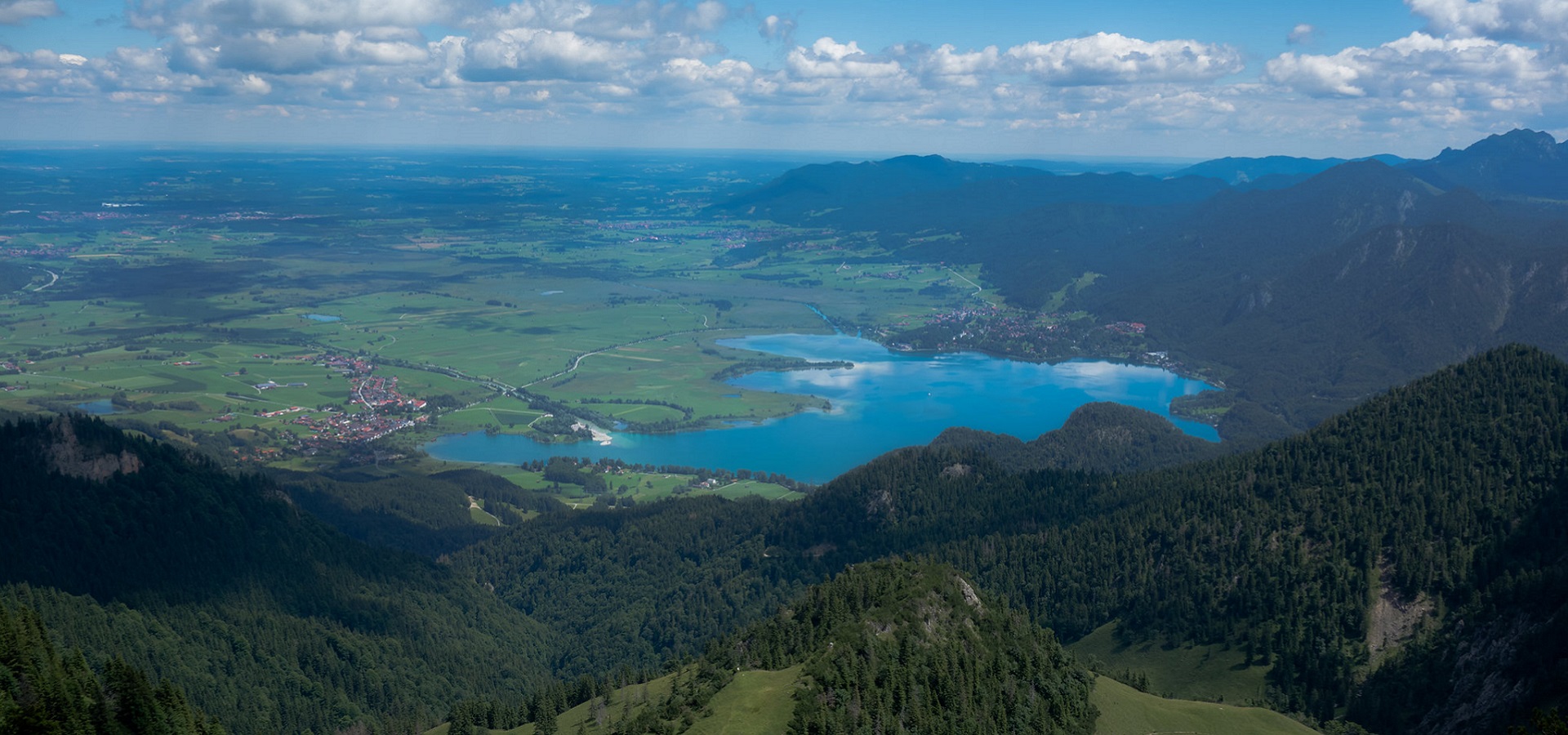The huge tourist crush this summer in the Alps shows that sustainable tourism has to mean more than just going local. There is a wealth of innovative ideas for making tourism softer on the environment and climate. Rather than just complain about the glut, localities have to insist upon these sometimes prohibitive measures – even if it means turning customers away. Paul Hockenos has the story.

Many Germans went this year on vacation to the Alps. (vladislav@munich, CC BY 2.0)
Kochel See, Germany
Until this summer, local tourism had nearly silver-bullet status in the discussion on how to cut down the sky-high carbon footprint of tourism. After all, vacationing a few hours away from home means zero CO2 emissions from aviation and zero filthy cruise-ship exhaust. Moreover, there’s less stress on favorite faraway destinations, such as Portugal’s Algarve Coast, Iceland’s Blue Lagoon, the Greek islands, and the Norwegian fjords, to name just a few places where non-stop throngs of holidaymakers have taken heavy tolls on nature – as well as on the nerves of the communities there.
This summer Germans stormed en masse to the much nearer Alps, which has suffered from overtourism for years. Indeed, the Bavarians learned the hard way this year that regional tourism alone isn’t sustainable tourism. Of course, not concern about the climate but rather the Covid-19 pandemic prompted many Germans to take vacation nearer to home this year, fleeing hot, close-quartered cities for other locations within driving or train distance, such as the Alps.
In fact, German tourists flocked to the Alps causing the worst crowding ever: traffic-jammed streets, hiking paths overrun with hikers and e-bikes, overflowing dumpsters and litter, water shortages, and tenting on protected lands.
Not only do the crowds annoy just about everybody, “they destroy nature,“ wrote journalist Ulrike Fokken in the German daily taz: “There are too many of them and they don‘t know what they‘re doing. Kayakers destroy the bank habitat of white-throated dippers and other shore birds; cross-country runners and e-bikers pack down the forest floor and prevent herbs from growing and trees from germinating for decades. Bathers discharge sunscreen in sensitive mountain lakes; canyon jumpers climb in neoprene suits through ecotopes in canyons that have been shielded for millions of years; and paragliders frighten chamois and breeding golden eagles.“
The ibex, black grouse, and golden eagle are rarely seen anymore in the Alps. The chamois population is a third of what is was 20 years ago. The tracks of the heavy equipment that tend ski slopes erode thin topsoil on which the vegetation cover depends, and over-fertilization in summer causes severe losses of biodiversity. Tourism also results in water supply problems, including from the production of artificial snow and in sewage and waste disposal management difficulties. The waste generated in high-altitude refuges is such a problem that helicopters have to transport it away.
Overcrowding and overuse are some of the evils that sustainable tourism seeks to rectify: by limiting tourists numbers, levying tourist taxes, providing apps that show lesser visited places nearby, etc. The idea behind sustainable tourism is that it actually makes a positive impact on the environment by using less fossil fuels but also by sustaining the overall viability and health of ecological systems, which are also critical to the climate. Planning and management controls can reduce the impact on fragile coastal, island, and mountain environments.
There are many progressive, innovative strategies for helping limit soil erosion, conserving water resources, and preventing overfishing and encroachment on sensitive habitats. For years there have been calls to limit new ski lifts and snow machines, make hotels more nature friendly, and see that resources are used more effectively.
Bavarian conservationists have a range of ideas to protect Alpine nature while enabling people to enjoy it: such as Zero Impact Camps, sustainable tourism certification, better public transportation, Bergsteigerdörfer, and more. Many towns have banned weekend tourist traffic from their downtowns. There can also be strict limits set for the number of people allowed on a mountain or at a lake on any given day – the way Iceland does with the Blue Lagoon. Higher prices or ticket fees could cover maintenance costs for the peaks and other landscapes. E-bikes, mountain bikes, and other devices with wheels and motors could be barred from travelling on forest trails.
“Mobility is a key to sustainability,” Christian Zwanziger of Bavaria’s Greens told Energy Transition. “This means making it easier to travel long-distance without a private car, as well as improving local mobility without your own vehicle.” The former, he says, implies providing better rail transport to tourist destinations, while the latter includes the like of bus transport directly to hiking routes.
These concepts aren’t new: there’s a rich debate around sustainable tourism in the EU for years.
Fokken points out that the Bavarians have brought the plague of overtourism upon themselves. Tourism is Bavaria’s cash cow. Last year it chalked up 100 million overnights and revenue of €30 billion.
The state’s conservative politicians can’t get enough of it, building ever more highways and tunnels and gondolas to grease the tracks straight to the hotels and restaurants. “Our tourism is a success story and door opener for Bavaria’s economy,” said the Alpine state’s economy and tourism minister Hubert Aiwanger this year.
So soon after its summer ordeal, Bavaria will have to start thinking about winter. Downhill skiing is so punishing on nature that it’s practically criminal. And the fact that Covid-19 spread to Germany and Austria through a superspreader event in Ischgl, a popular resort in western Austria, raises the question of whether the lifts anywhere in the Alps should open this year.
Don’t bet that Bavaria’s business community will be pushing for it.
Super geschriebener und informativer Artikel :-). In diesen Blog werde ich mich noch richtig einlesen
Thanks very much!